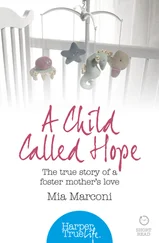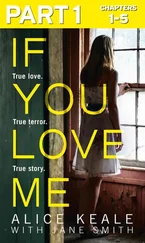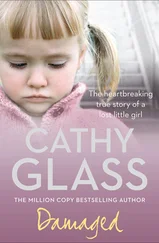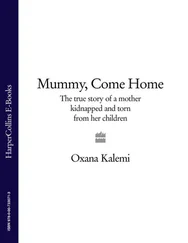Okay, first we will try the medicines, but if that does not help, then…
«Yes, we will fix you, my little boy, so don’t cry!»
He is not crying, actually, just staring at me. He is sure that if his mother’s picked him up now then it won’t be for nothing, she’ll nurse him. He is probably thinking, «Good, she has figured out that I’m hungry. Oh, am I hungry! Just one thing: what is this, dripping on top of my head?»
I do not even notice the tears streaming down my cheeks. I have no idea yet that my trickle of tears will become a river of tears I shall cry in the long years it will take to raise our child.
A month later, after checking the size of my son’s head and examining the fontanel with a little lamp in a dark room, the doctor confirms her initial diagnosis. She prescribes Tim diuretics for six months. Even now there is no other treatment for this illness. The only other option is surgery, described by non-professionals as «inserting a tube.» This form of treatment is called a cerebrospinal fluid shunt. So we have to get used to living under this sword of Damocles, the threat of this cerebrospinal fluid shunt.
We start each day by giving our son who’s still so tiny a diuretic pill, and feed him only half an hour later. How can you explain to a baby why his mom forces something bitter into his mouth instead of giving the hungry little one something to eat? I would walk around the house with my son in my arms and talk to him, but he clearly does not understand me.
At first my boy would listen to me attentively, but after ten minutes he begins to show his frustration, and I need to kill another twenty minutes! I use any toys that happen to be around, it soon fails to help, and he would scream out loud insulted, not understanding the reasons behind my cruelty, never forgiving me. I play the piano for him to get through another five minutes. I park myself on the edge of a chair with Tim in my arms and play anything that comes to mind, fragments of music pieces or sometimes just incoherent sounds. Three times a day, for the following six months.
After a while, I notice that the baby’s cheeks and forehead are covered with red spots. At first they are pale pink, and then they become brighter and crawl menacingly all over his body.
«He has got diathesis,» a girlfriend tells me authoritatively when she comes to visit.
«So what am I supposed to do now?» I am perplexed, it’s the first time in my life that I come across this condition.
«Well… I think you need to apply some special mix, your doctor can give you a prescription, or you can just ask at the pharmacy.»
Having imagined the long queue we’ll have to bear to get a prescription, I decide to go to the local pharmacy. «Do you have anything for diathesis?» I ask. They give me a brownish liquid in a bottle, and I pour almost half of it over the child’s skin.
The next drug is zinc oxide cream, some other medicines follow, but the condition deteriorated. My son continued crying and scratching his cheeks and forehead. We ended up going back to the doctor. She listened to me for a long time until I finished listing all the drugs I had tried, and then she said, «There is one other option. It might take a long time but it is proven to help!»
For the next six months I worked so thoroughly I could have won the title of «Mrs. Scrupulous.» I ground eggshells into a fine powder, took some powder with the tip of the knife, added a few drops of lemon juice, and forced this mixture into my son’s mouth. When I started giving him porridge things became easier, because you could mix it up in the porridge. I kept doing this even without believing this could really help. Interestingly, it actually did! It took a long time; it was only near the age of ten months that my son’s face cleared itself and we could declare victory.
Also, six months later the neurologist told us, with obvious relief, that we had come off cheap and there was no need to insert a tube. It seemed to me then that the only indication of my son’s illness was his relatively large head, but back then we just had no idea what kind of future lay ahead of us.
I had no inclination that this minor scare would result in dire consequences for us, and alas, that such a serious illness never passes on by without leaving a trace. My baby would grow into a handsome boy with flaxen curly hair and blue eyes. He would not say a word for two years. He was almost three years old when he started talking. Strangers would take him for a girl, but he would proudly tell them in his defective tongue, «I am a boy».
I had no idea my boy had so many illnesses that he should have been put before a scientific symposium where a notable professor would be pointing to my child’s tiny body from head to toe, citing the illnesses that fate had bestowed upon my child.
At this time, I did not know that the hospital would become our second home, and that the pediatrician and the dermatologist would practically become members of our family. Back then, I didn’t know that I would end up knowing reference books on childhood illnesses by heart, that I’d become fluent in the names of diseases, symptoms and treatments like a professional, and some doctor would even ask me if I had medical education.
Quite so. By the time my son was diagnosed with so many conditions I had begun to realize I must get to the root of his problems myself.
I read everything that was available on the subject. There wasn’t much in the early 90’s, book publishing was not a priority at that time.
But still, literally piece by piece, I collected all the information that could be useful to me in the fight for my child’s wellbeing, and sometimes even for his life.
Looking back, I feel like I am clearing away the debris of my memory, pulling pieces out of its corners, crumpled like candy wrappers, frozen in time. Almost like going through old black and white photographs, which once again have become fashionable these days. Back then it was simple: you were walking down the street and a photographer took your picture. Sometime later you received the photo by post!
4. I Am Saved by the Cross, But It Gets Too Heavy to Carry
The paperwork I was given in the clinic has now swollen to gigantic proportions and no longer fits in my handbag. I am holding the medical records in one hand, and my child’s hand in the other.
I am walking down the street crying my eyes out. I take no notice of passers-by, weeping without wiping away my tears. My frightened son clutches at my hand as he drags his feet silently beside me. Passers-by do look at me, and some even ask me what is wrong, but I only see them through frosted glass and hear nothing. All I want is to be invisible for the rest of time, so I will no longer have to deal with that indifferent doctor who fills out Tim’s medical records without any signs of hope, with sleepless nights, with mountains of drugs, with the pity of my friends who keep asking me how I am doing.
No more burning tiredness and fatigue in my soul… and not him around me, either? He is walking close beside me. His straw-colored curly hair bounces every time I tug his hand, «Can’t you walk any faster?» But he never answers. Yes, he will stay. Will he stay there on his own, without me? What would he do without me? Who else would look after him? Stop.
I freeze in the middle of the sidewalk. He slows down and timidly raises his eyes to me as if saying, «Mommy, please don’t cry.» I stay silent, thinking to myself, «Lord, why did you give me such a cross to bear?»
«Mommy, please don’t cry.»
I feel as if I were awoken from a pointless sticky dream and start looking around. The everyday bustle of the city continues around us as we stand on the edge of the sidewalk, and suddenly I come to understand that this is my life and I need to deal with it. I must live a life, not drag on with bearing a heavy cross ruefully. The next minute I lift my eyes and see the cross. We are standing next to a cathedral. Something clicks in my head. I grab my son’s hand again and rush through the gates to the cathedral yard where I see the dark silhouette of a priest.
Читать дальше












